Types of Rehabilitation and How Seniors Benefit

Rehabilitation is a valuable tool for individuals of all ages facing many challenges. In the older generation, rehabilitation is often used following a hospital stay, a major health event like stroke or heart attack, or a surgery like hip or knee replacement. These therapies can also improve seniors’ quality of life as they navigate declining mobility or a chronic health condition like arthritis, dementia, or Parkinson’s disease.
Overall, rehabilitative therapies can help seniors:
-
- Be more independent in activities of daily living (ADLs).
- Improve their strength and functional abilities.
- Reduce their risk of future falls and alleviate fall-related anxiety.
- Return to maximum functioning and get home quicker following an illness or injury.
- Improve their ability to chew and swallow.
- Communicate their needs more effectively.
- Learn to use new mobility aids safely.
- Learn exercises they can use to maintain their progress long-term.
The following types of rehabilitation are commonly used to improve short-term recovery and long-term quality of life for seniors.
Physical Therapy
Many seniors experience a gradual decline in mobility at some point during retirement, and physical therapy can be used to help them successfully and safely adapt. With the support of a skilled physical therapist, seniors can confidently explore new ways to improve mobility and preserve their independence. A physical therapist will sit down with their patient and formulate a tailored treatment plan that addresses their personal goals and wishes. For example, seniors might like to improve their ability to get dressed or transfer in and out of bed. With expert guidance in a therapeutic setting, seniors can work towards goals that are meaningful to them.
Physical therapy can help with more than declining mobility; it also plays a vital role in rehabilitation following health events like a stroke, heart attack or fall, and surgeries including amputation or joint replacements. All these acute events can quickly and drastically alter a senior’s ability to move freely and carry out ADLs, which can have a marked effect on quality of life. With physical therapy, seniors can receive the expert support and advice they need to get back home and living independently.
Occupational Therapy
Occupational therapy often goes hand in hand with physical therapy. It focuses on helping people carry out the necessary activities in their life – known in this context as their “occupation.” Similarly to physical therapists, occupational therapists formulate personalized treatment plans based on an individual’s unique needs and goals. For seniors, occupational therapy typically aims to provide practical support and advice that helps them stay functional and complete ADLs as independently and safely as possible. Within both physical and occupational therapy, seniors may also receive help adapting to new mobility aids and equipment.
Speech Therapy
Communicating our needs is vital to maintaining good physical and mental health. Speech therapy can assist with everything from voice clarity and comprehension to chewing and swallowing. A speech therapist can guide patients through exercises that help strengthen the muscles responsible for speech. With these tools, seniors may communicate important feelings like distress, pain, and anxiety better. Seniors in the later stages of dementia who struggle with communication and those who have suffered a stroke or brain injury may benefit from this type of rehabilitation.
A slightly less obvious application of speech therapy is assisting seniors with chewing and swallowing difficulties. Speech therapy can help prevent malnutrition – a common complaint in the senior population – by introducing new eating strategies and helping seniors practice them. These strategies can help food reach the stomach to boost nutrient intake while potentially reducing choking risk.
A Safe Environment
Starting new therapy can be daunting for seniors, particularly if they have suffered an accident, fall, or acute health event that has decreased their confidence. Physical, occupational, and speech therapists who regularly work with seniors have a deep understanding of these worries. Rehabilitation specialists are highly trained and show compassion and empathy for patients, offering positive encouragement without causing overwhelm. With the right therapist, seniors can feel safe, supported, and make meaningful progress at their own pace.
Why Choose Chapin Home for Rehabilitation?
At Chapin Home, we empower patients and residents to feel as independent and strong as possible. We are proud to offer all three rehabilitative therapies to short and long-term residents. Our winning combination of expert physical, occupational, and speech therapists, state-of-the-art facilities, and specialist equipment allows our patients to get the most from their rehabilitation journey. We’re particularly proud of our activities in the daily living kitchen, which will enable patients to practice vital ADLs like cooking, cleaning, and housekeeping within a safe and supportive setting.
To tour our rehabilitation department, meet our highly skilled therapists, and have your questions answered, get in touch today to arrange a visit.
